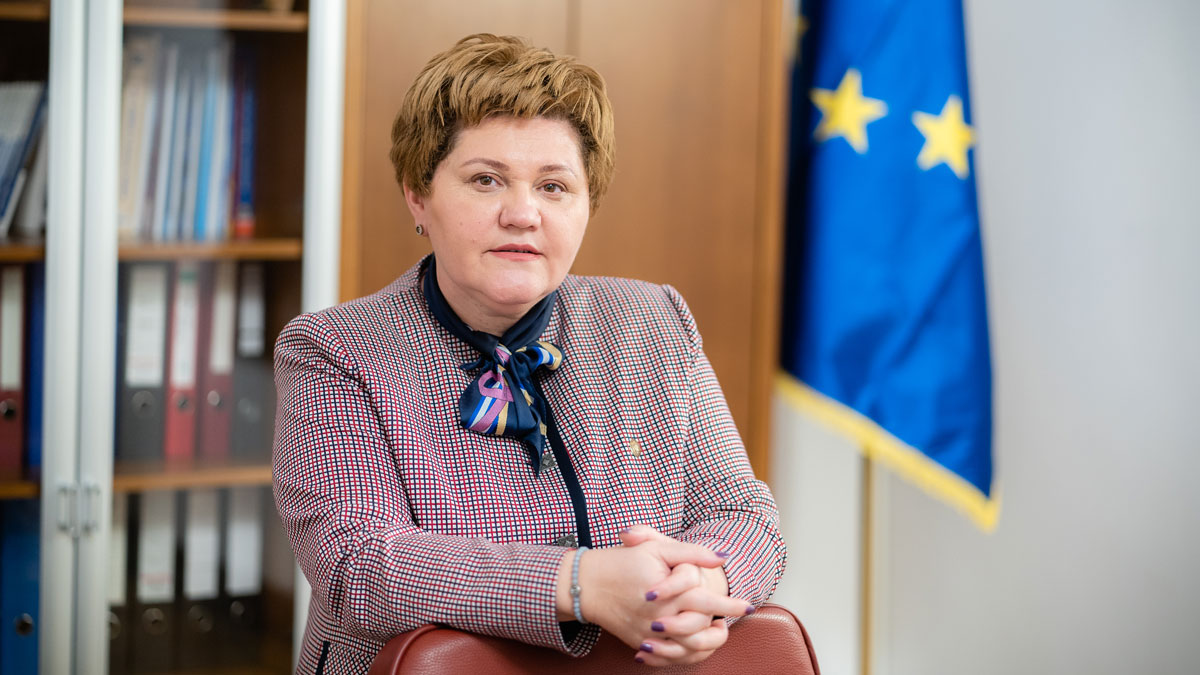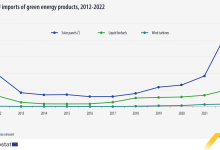Talking to Experts: Oana-Marciana Özmen
First Hydrogen Bill in Romania
The first hydrogen bill was tabled on February 15, 2023, in the Romanian Parliament. The document attests to the importance of this energy source of the future in the process of decarbonisation and achieving the country’s energy independence.
Oana-Marciana Özmen, Secretary of the Committee for Industry and Services, Chamber of Deputies, explains the importance of achieving a balanced energy mix, including the integration of hydrogen, to ensure the energy transition.
As the initiator of this bill and a supporter of the development of the energy sector, how do you see the transformation of this important sector of the economy?
Oana-Marciana Özmen: The energy sector needs to be strengthened by increasing clean energy production capacity, which will contribute both to Romania’s energy security and to the competitiveness of Romania’s economy. By producing green and low-carbon hydrogen we contribute to these goals.
What exactly does the bill on the integration of hydrogen from renewable and low-carbon sources in the industry and transport sectors provide for?
Oana-Marciana Özmen: The bill aims to integrate green and low-carbon hydrogen into the industrial and transport sectors.
An important role in this transition will be played by the use of low-emission hydrogen (nuclear and gas) according to the trajectory and targets set by the European Union.
In this context, conventional fuel suppliers will take the necessary steps to integrate green hydrogen into transport.
Industrial consumers will use green and low-carbon hydrogen according to the strategy developed by the Ministry of Energy, in line with EU proposals.
In order to achieve these obligations, a certificate system will be set up, which will motivate hydrogen producers to produce and market green hydrogen in Romania.
What will be the major benefits of hydrogen-based applications? What about the main impediments? Energy experts bring up the rising costs of green hydrogen production… not to mention the challenges associated with the infrastructure of the hydrogen economy – storage, transportation, distribution.
Oana-Marciana Özmen: The energy crisis in 2021 and 2022 is a wake-up call for the whole of Europe.
In the context of decarbonisation, the energy system needs to be reformed, using European funds available through the National Recovery and Resilience Plan (NRRP) and the Modernisation Fund, to produce and use green and low-carbon hydrogen.
Romania has EUR 1,391.6 million available through the Modernisation Fund for the decarbonisation of the energy system. The European Union has ambitious targets, as shown by the announcement of creation of the European Hydrogen Bank, which will be able to invest EUR 3 billion to build the hydrogen market.
EUR 149 million are allocated through the NRRP for the construction of facilities for hydrogen production from renewable sources by the end of 2025, in line with the objectives of the European Hydrogen Strategy and the European Green Deal.
The industrial sector needs to diversify the energy sources it uses if we are to have a competitive economy and avoid a long and costly transition, especially as European funds are available.
Therefore, green hydrogen is both an opportunity and a necessity to find sustainable solutions for a new diversified energy system.
The objective of this law is to give a signal to the market and to trigger the first investments in the field, to reduce costs that will decrease as the first production capacities appear and to find solutions to infrastructure-related challenges.
Of course, there are these challenges that need to be addressed by setting a timetable with clear targets and objectives.
It is necessary to regulate the integration of hydrogen use, at a time when the European Union is proposing major investments in the hydrogen sector by creating the European Hydrogen Bank, which will finance such projects.
What are the next steps of the approach taken?
Oana-Marciana Özmen: The bill follows the parliamentary procedure, i.e., debate in committees, adoption and implementation, with the support of the responsible authorities.
According to the Deloitte study ‘Hydrogen. Making it happen’, Europe is emerging as the largest producer of green hydrogen, the ‘clean’ energy that could transform heavy and manufacturing industry, aviation, and transport by 2030. How does Romania fit into this European framework?
Oana-Marciana Özmen: With this legislative proposal, Romania wants to position itself among the leading countries in Europe in terms of hydrogen. We want to send a clear message: this new energy sector is our business; we have the capacity and we will play an important role in the production and consumption of green hydrogen on the continent.
Europe has set itself the target of consuming 20 million tonnes of green hydrogen in 2030 in order to overcome the energy crisis it faces. This is an ambitious target, a challenge to achieve, but it sends a clear message to all Member States: a new energy sector is emerging – that of hydrogen.
Romania has the capacity to develop such projects and can play an important role in the SOUTH-EAST region of Europe.
Which companies or associations in Romania have already started projects/studies in this direction? What are the partners you are working with for this purpose?
Oana-Marciana Özmen: This bill is the result of consultations held during 2022 in Parliament within the Hydrogen Taskforce of the Committee for Industry and Services, both with representatives of state institutions with responsibilities in the field, but also with public organisations and industry associations.
An important role has been played by the excellent cooperation with the Ministry of Energy, led by Minister Virgil Popescu and specialists from the Department for Public Policy and Green Deal of the Ministry.
Also, working on this project with the Agency for Natural Resources and Energy (ANRE)’s experts is due to the openness of the ANRE management. Vice President Zoltan Nagy-Bege facilitated the necessary support, the presence of experts and other state institutions made it possible to complete this project.







